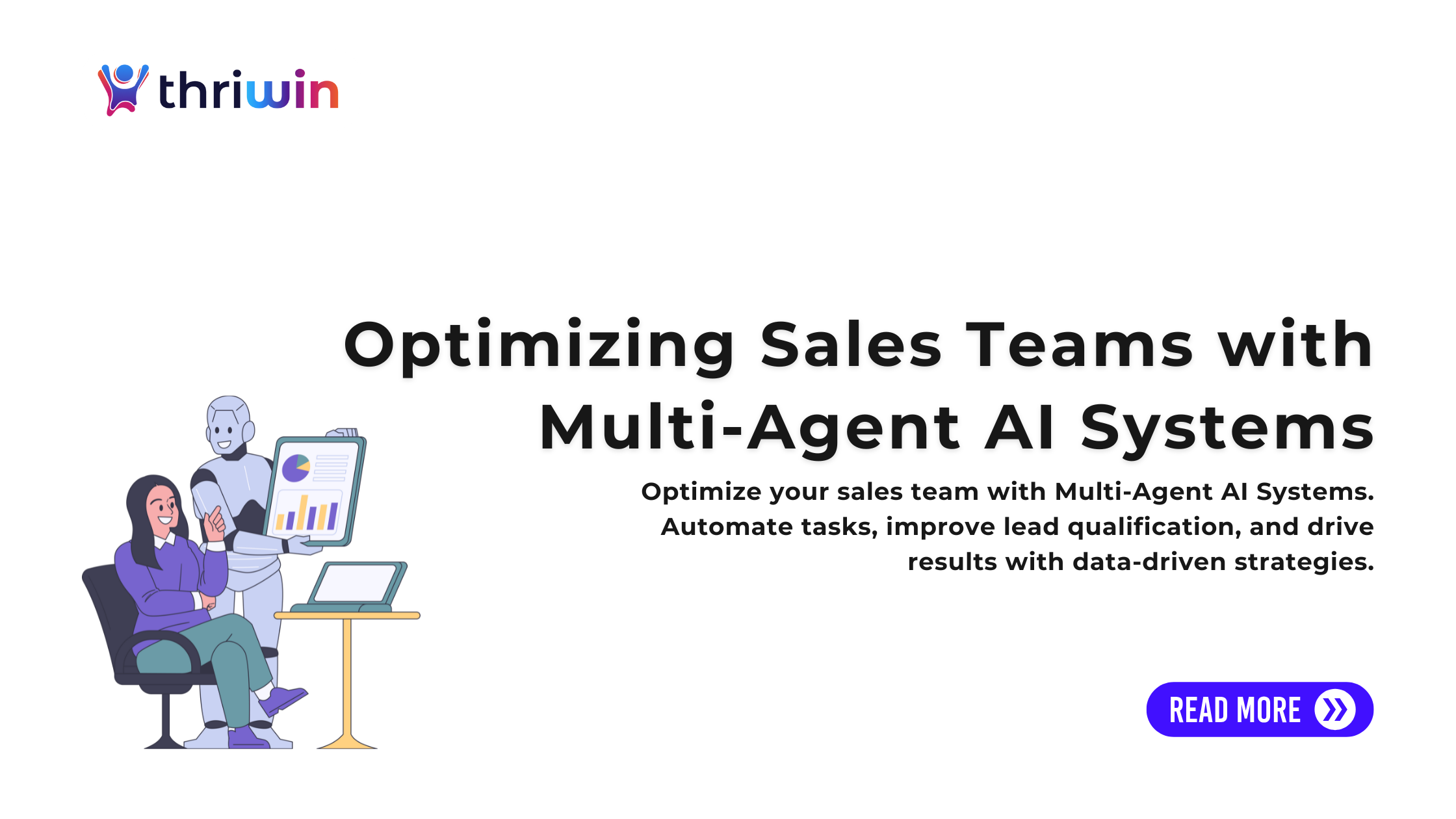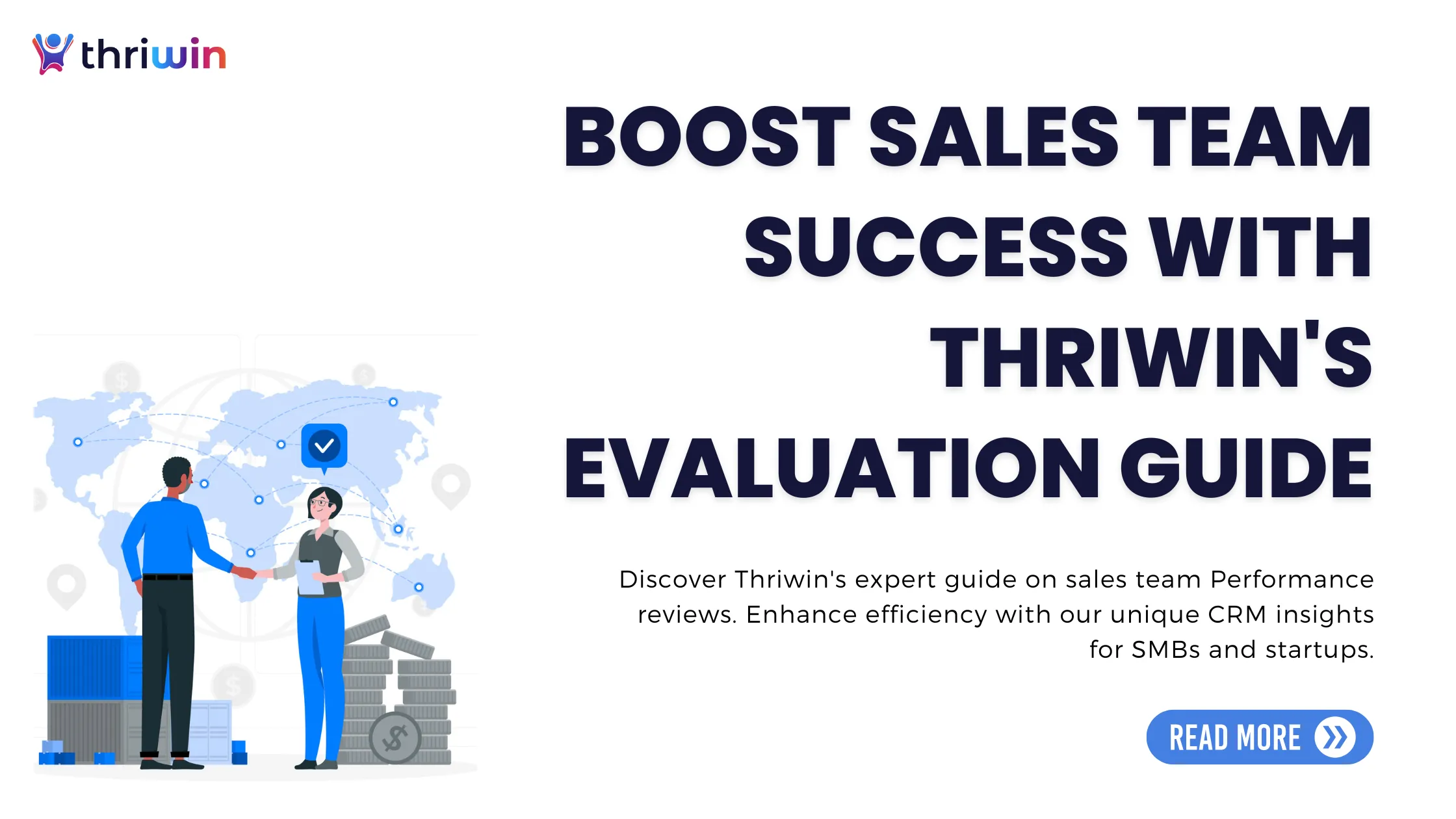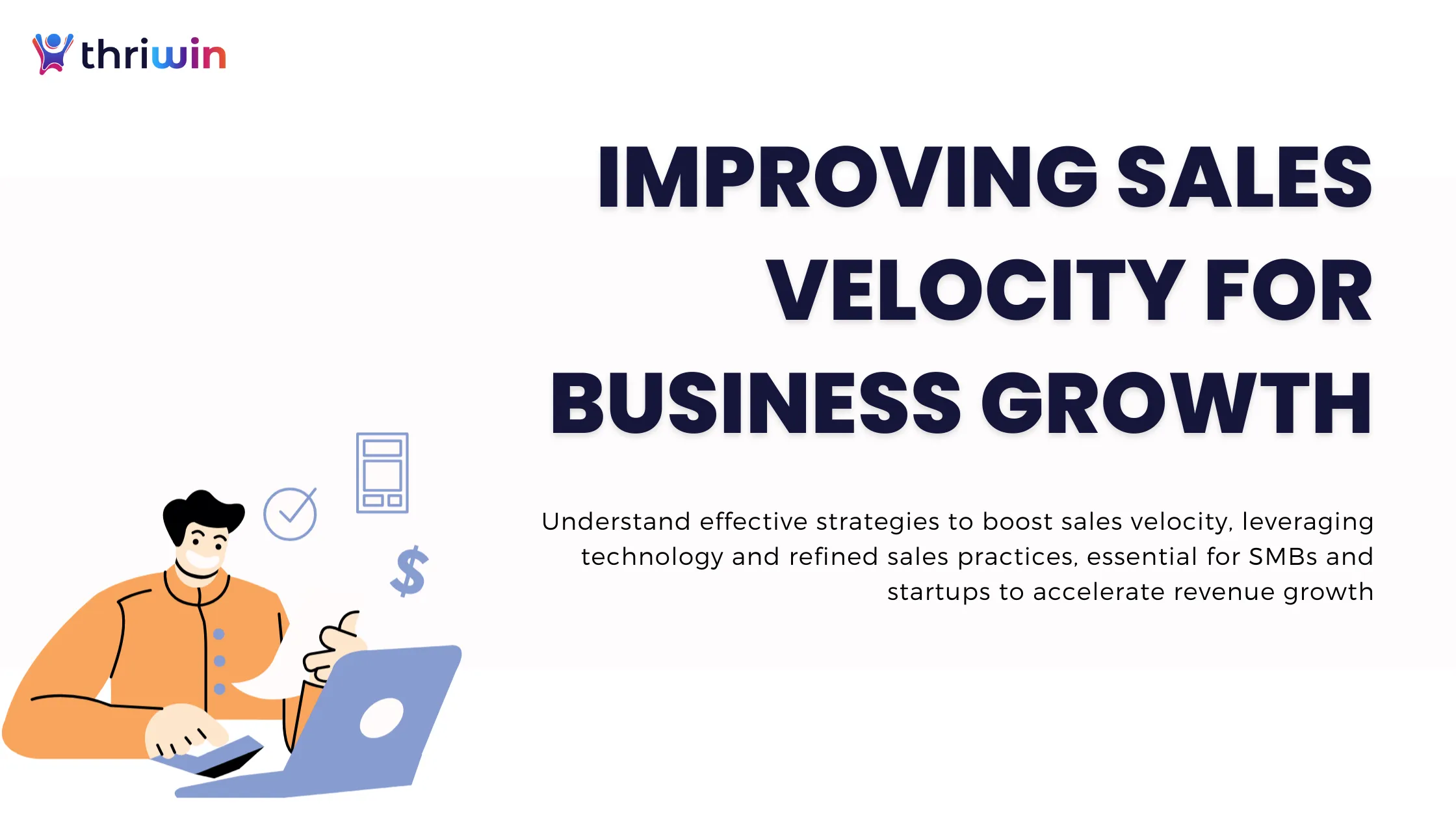Is your sales team stuck in administrative loops, experiencing slow follow-ups, and using one-size-fits-all outreach? Multi-Agent AI Systems (MAS) distribute work across specialised agents—qualifying leads faster, personalising at scale, and keeping every step compliant.
This article explores MAS in-depth, focusing on how it enhances sales operations, provides actionable implementation strategies, addresses key challenges, and highlights emerging trends. Real-world case studies highlight the transformative potential of this technology, offering valuable insights for decision-makers.
How MAS Lifts Sales Performance (Six Proven Plays)
Multi-agent AI systems (MAS) are revolutionizing sales operations by addressing inefficiencies, enhancing customer engagement, and enabling data-driven strategies. Here’s how MAS delivers significant improvements in sales team performance:
1. Smarter Lead Qualification
MAS ranks leads using CRM, web, and email signals (pages viewed, intent events, recency/frequency). Reps focus on high-probability accounts; low-fit leads are nurtured automatically.
Example: An intent-scoring agent prioritised accounts repeatedly viewing pricing/docs. SDRs focused on these cohorts; time-to-first-touch dropped, and qualified opportunities increased materially.
2. Personalized Customer Engagement
MAS tailors messages by preference, history, and stage. A copy agent drafts variants; a policy agent enforces tone, brand, and compliance before send.
Example (Retail/e-comm, anonymised): An offer-selection agent adjusted incentives by intent and margin band, improving abandoned-basket recovery while protecting contribution.
3. Automating Routine Tasks
Agents handle scheduling, reminders, enrichment, and CRM hygiene. Reps spend more time in conversations; data quality improves because updates are automatic and auditable.
Example (Manufacturing, anonymised): Calendar, routing, and CRM-update agents reduced admin load for field reps; leadership gained reliable pipeline visibility.
4. Forecasting and Strategy Planning
Agents synthesise historical + live signals to forecast demand, pipeline velocity, and capacity needs. Plans update as markets move; teams act proactively instead of reactively.
Example (Logistics, anonymised): A forecasting agent combined seasonality with macro indicators to trigger targeted outreach and align capacity ahead of peaks.
5. Enhancing Productivity and Collaboration
Work allocation agents route high-value deals to senior reps and simple requests to juniors—balancing load, raising win odds, and speeding response.
Example (Insurance, anonymised): Lead-routing by value/complexity cut response times and improved utilisation across the team.
6. Optimizing Pricing and Cross-Selling
Agents compare competitor moves, elasticity, and inventory to suggest dynamic pricing and attach offers—within guardrails for margin and policy.
Examples (Hospitality & e-comm, anonymised): A pricing agent adjusted room rates during demand spikes; a basket agent recommended complementary SKUs at checkout—both with margin floors enforced.
This targeted application of MAS demonstrates how, through strategic AI implementation, businesses can significantly enhance sales operations, foster stronger customer relationships, and achieve higher revenue.
Implementing Multi-Agent AI Systems in Sales
Implementing Multi-Agent AI Systems (MAS) requires a structured approach to ensure seamless adoption and measurable results. Below is an expanded guide with detailed information for each step.

1. Assess and Prepare
Description: Begin by in-depth evaluating your current sales processes. Identify inefficiencies, repetitive tasks, bottlenecks, and areas where MAS can add value, such as lead qualification, follow-ups, and customer engagement. Simultaneously, prepare your data by consolidating and cleaning information from various platforms to ensure compatibility with MAS.
- Example: A mid-sized e-commerce company discovered that it had fragmented customer data stored across multiple platforms. They streamlined this data into a centralised CRM before deploying MAS, which improved data analysis and lead scoring accuracy.
- Key Tasks:
- Audit sales workflows to pinpoint gaps.
- Streamline data from CRM, email platforms, and other sales tools.
- Ensure data quality using tools like Talend or OpenRefine.
- Implementation Insight: Utilise process mapping tools like Lucidchart to visualise existing workflows and pinpoint areas where MAS can have the most significant impact.
2. Select and Customise the Right MAS Tools
Description: Choosing the right MAS platform is critical for aligning AI capabilities with your sales objectives. Look for features like real-time lead scoring, task automation, and integration capabilities with your existing tools. Customisation ensures the MAS fits seamlessly into your specific workflows and sales pipeline.
- Example: A B2B SaaS company opted for Salesforce Einstein, customizing it to score leads based on engagement levels and prioritize follow-ups for high-value prospects. This increased conversion rates by 30%.
- Key Considerations:
- Scalability: Ensure the MAS can handle increasing sales volumes.
- Customisation: Adapt MAS functionalities, such as task prioritisation, follow-up sequences, or lead scoring.
- Compatibility: Verify integration with tools like Salesforce, HubSpot, or Zoho CRM.
- Implementation Insight: Compare vendors using criteria such as ease of use, feature set, and customer support. Platforms like Conversica and Drift are ideal for sales-focused MAS applications.
3. Integrate with Existing Systems
Description: MAS must integrate seamlessly with your existing technology stack. This includes CRMs, marketing tools, analytics platforms, and communication tools. Integration ensures smooth workflows, reduces redundancy, and improves the overall efficiency of sales operations.
- Example: A fintech firm integrated MAS with HubSpot and marketing automation tools. This provided real-time lead updates, better pipeline visibility, and seamless communication between sales and marketing teams.
- Key Tasks:
- Develop an integration roadmap outlining system connections and workflows.
- Test integrations to ensure data synchronization and minimize disruptions.
- Set up APIs or connectors between MAS and existing tools.
- Implementation Insight: Collaborate closely with IT teams or consultants to address compatibility issues and perform stress tests. Use middleware like Zapier or custom APIs for smooth integration if direct support isn't available.
4. Train and Onboard Teams
Description: Training ensures your sales team understands how MAS works and how it can improve their productivity. Comprehensive onboarding includes explaining new workflows, demonstrating MAS capabilities, and addressing resistance to AI tools.
- Example: A retail company held role-based training sessions that focused on how MAS automates routine tasks, such as scheduling and CRM updates. Within three months, the adoption rate was 95%.
- Key Tasks:
- Organize workshops to familiarize teams with MAS functionalities.
- Provide hands-on training specific to sales reps, managers, and IT staff.
- Share success metrics to highlight the benefits of MAS and drive adoption.
- Implementation Insight: Develop interactive, role-specific training modules using platforms such as Udemy Business or Trainual. Incorporate regular Q&A sessions and feedback loops to address concerns and improve learning outcomes.
5. Monitor, Optimize, and Scale
Description: Post-deployment, continuously monitor MAS performance to ensure alignment with sales objectives. Use KPIs like lead conversion rates, pipeline velocity, and sales cycle duration to measure success. Optimize workflows based on insights and scale the solution as your business grows.
- Example: A logistics provider utilised Tableau dashboards to monitor MAS efficiency, identifying underperforming agents and reallocating tasks accordingly. They later scaled the MAS to handle international sales, resulting in a 40% increase in ROI.
- Key Tasks:
- Track key metrics, including lead response time, conversion rates, and cost per acquisition.
- Use A/B testing to refine MAS configurations, such as task allocation or lead scoring algorithms.
- Plan for scaling MAS as workloads increase, ensuring the platform adapts to new requirements.
- Implementation Insight: Integrate MAS with advanced analytics tools, such as Power BI or Tableau, for real-time reporting. Schedule regular performance reviews with sales and IT teams to fine-tune processes and address gaps.
This five-step implementation process streamlines the essential tasks of effectively deploying MAS in sales operations. By assessing their needs, selecting the right tools, integrating seamlessly, training teams, and monitoring performance, businesses can unlock MAS's full potential to improve efficiency, productivity, and revenue growth.
Case Studies: How Multi-Agent AI Systems Drive Sales Optimization
The application of Multi-Agent AI Systems (MAS) has proven transformative across various industries, delivering measurable results in sales optimization. Here’s an in-depth look at real-world examples that demonstrate the power of MAS:

These case studies illustrate how MAS can address various challenges across different industries. They offer tailored solutions that drive measurable improvements in efficiency, customer satisfaction, and revenue generation. Businesses strategically implementing MAS can unlock significant competitive advantages in their sales operations.
Challenges and Considerations
Data Privacy and Security
MAS requires access to vast amounts of customer data, which raises significant privacy concerns. Businesses must prioritize robust encryption, secure storage, and compliance with regulations like GDPR and CCPA. Failure to address these issues can lead to reputational damage and legal risks.
Aligning AI Objectives with Business Goals
A poorly implemented MAS may focus on optimizing the wrong metrics, leading to inefficiencies. Regular collaboration between sales leadership and AI specialists is necessary to align MAS operations with organizational objectives.
Change Management and Adoption
Introducing MAS involves significant change for sales teams. Resistance to new technology is common and can hinder implementation. Communication, comprehensive training, and ongoing support help drive adoption and reduce friction.
Scalability and Cost
While MAS offers significant benefits, upfront costs and scalability concerns can hinder small businesses. Evaluate ROI carefully and select scalable solutions that grow in line with your business needs.
Future Trends in Multi-Agent AI for Sales
The evolution of MAS will continue to transform sales strategies. Key trends to watch include:
Advanced Predictive Analytics
Future MAS platforms will improve their ability to analyse customer data and forecast trends, enabling teams to act proactively. For example, AI can predict seasonal demand spikes, allowing businesses to adjust their inventory and sales strategies in advance.
Autonomous Sales Agents
Fully autonomous agents capable of managing entire sales processes may soon become mainstream. These agents will handle everything from prospecting to negotiation, delivering a streamlined experience for teams and customers.
Integration with Emerging Technologies
MAS will increasingly integrate with technologies like blockchain for secure transactions and IoT for real-time data collection. This convergence will improve the scope and precision of MAS applications in sales.
Custom AI Models for Niche Markets
As MAS technology matures, businesses will have access to highly specialised models tailored to niche industries, improving relevance and accuracy in sales operations.
Final Thought
Multi-agent systems (MAS) are transforming sales operations by automating tasks, enhancing lead qualification, and personalizing customer interactions. Their real-world impact, from smarter pricing strategies to streamlined workflows, highlights their value across industries.
However, implementing MAS requires aligning technology with business goals, seamless integration, and continuous refinement to maximize benefits. As MAS continues to evolve, its potential to drive efficiency and precision will expand.
With Thriwin, you don’t just add agents- you orchestrate them across sales and compliance. See a working MAS pipeline on your CRM data- Book a demo.
Frequently Asked Questions
What is a multi-agent AI system?
It’s an AI framework with multiple independent agents working together to solve problems or complete tasks efficiently.
How can MAS improve sales teams?
MAS improves efficiency by automating tasks, improving lead management, and delivering personalized customer interactions.
Are multi-agent systems scalable for small businesses?
Yes, MAS can be customized to fit the needs and budgets of small businesses, offering scalable solutions for sales optimization.
%201.svg)






